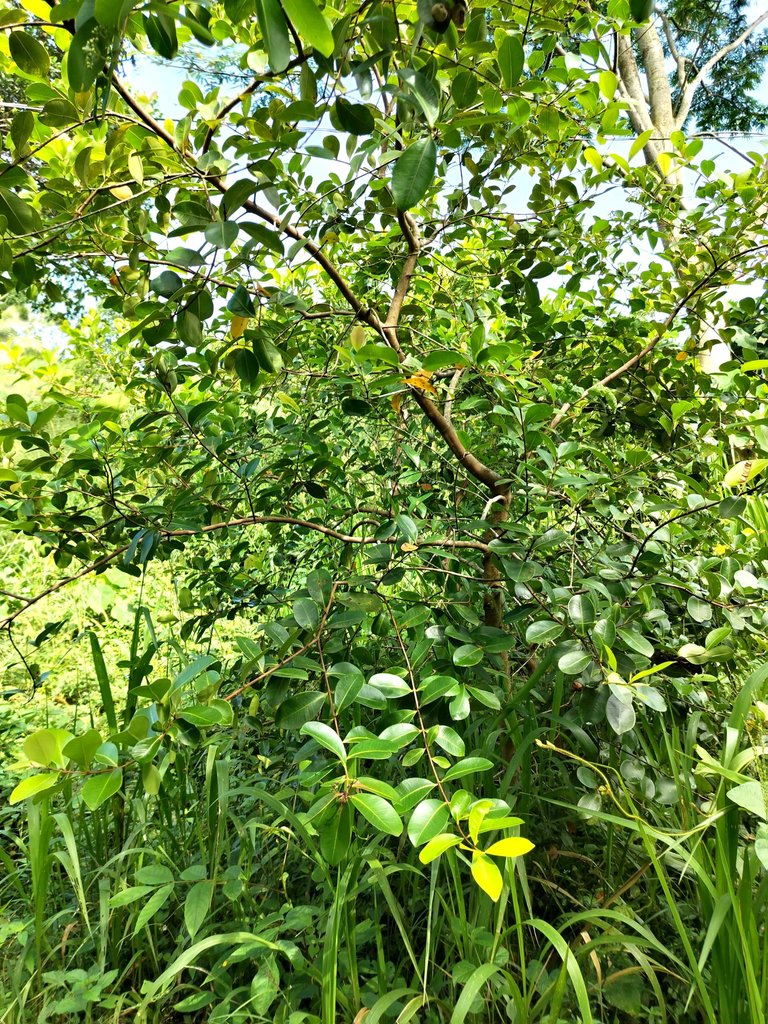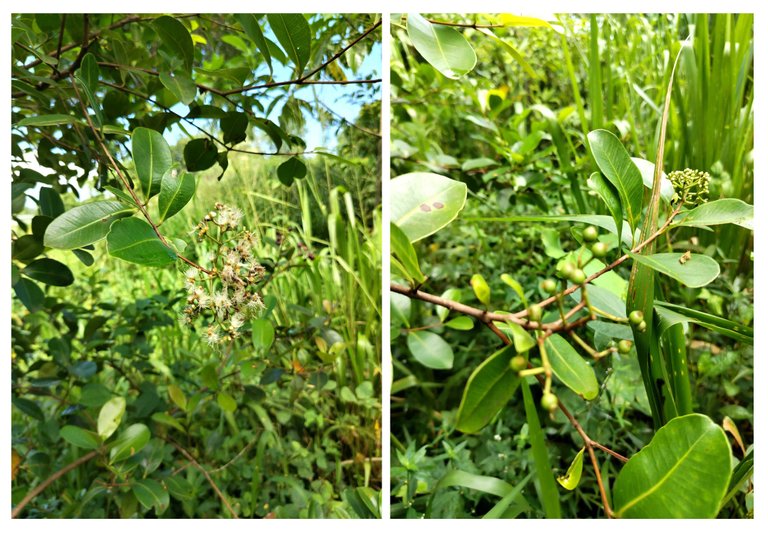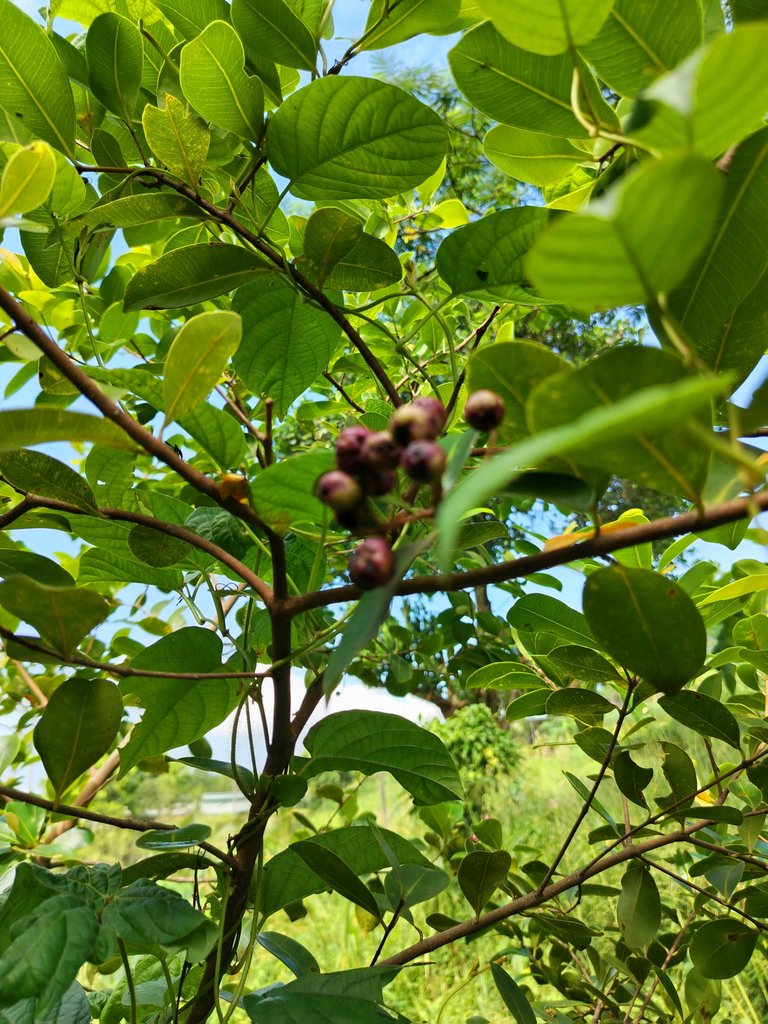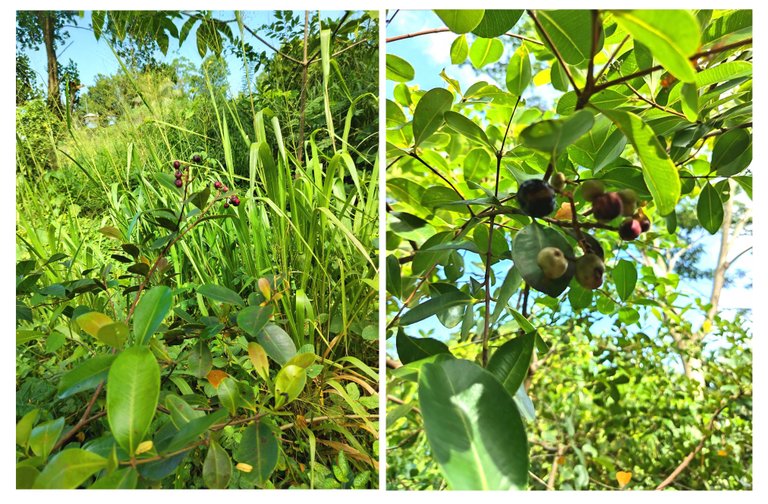Good morning to all my friends on Hive! Today, I felt inspired to write about the Java Plum plant, a tree that was once commonly seen during our childhood. Back then, Java Plum trees were a familiar sight, but now, finding one is rare enough that it feels challenging even to tell our children about it, let alone show them. However, I feel lucky to have a Java Plum tree growing near my home, a small reminder of those earlier days.
As a nature lover, I’m still learning about plants like these, and the Java Plum, locally known as "Madan," holds a special place in our ecosystem. Scientifically, it’s referred to as Syzygium cumini.


Today, while observing my surroundings, I noticed some semi-ripe fruits hanging from the Java Plum tree near my home. These small fruits, when fully ripe, take on a deep purple color and contain a single seed surrounded by juicy flesh. As children, we used to eat them quite often, and they bring back cherished memories for me from those days.


Java plums are not only delicious but also packed with health benefits. They are rich in vitamins C and A, which contribute to their nutritional value. In Sri Lankan traditional medicine, this fruit is recognized as a natural remedy. It’s believed to help regulate blood sugar levels, making it beneficial for people with diabetes. Additionally, its leaves and bark are used in Ayurvedic treatments, further highlighting its importance in natural healing practices.

In conclusion, these ripe fruits are now used in premium hotels to create simple jams or refreshing juices, where they are regarded as luxury drinks. Unfortunately, our own people don’t seem to value them as much. It’s crucial for us to protect such native plants that are gradually vanishing. I truly cherish the beauty of the Java plum tree in my own garden, a wonderful gift from nature itself.
Thank you reading
Have A nice day.
Best Regards,
Samadi Madushanki



